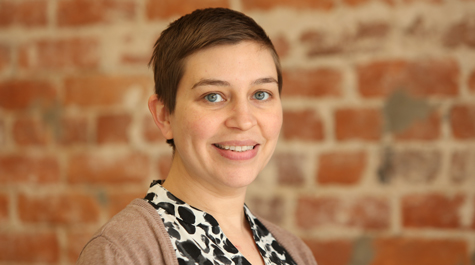The precarious, often predatory, world of credit in antebellum Virginia
Amanda Gibson is compiling evidence that traces today’s predatory financial practices to economic victimization of free and enslaved African Americans in the pre-emancipation South.
Gibson has been researching the role of free and enslaved African Americans in the financial world of the Old Dominion of old. Her project, “Credit is Due: African Americans as Borrowers and Lenders in Antebellum Virginia,” won her a two-year pre-doctoral fellowship at the Carter G. Woodson Institute for African-American and African Studies at the University of Virginia.
She is a Ph.D. student in William & Mary’s Lyon G. Tyler Department of History. Her Woodson fellowship will allow Gibson to finish her dissertation on the subject. She will receive her degree from William & Mary in 2020.
“Research shows that systemic racism limits African American's access to the financial industry today,” she said. “My own research suggests that many predatory lending practices had their roots in systems in place prior to emancipation.”
Gibson says the financial world of antebellum Virginia was informal by today’s standards. Borrowing and repayment occurred among a network of planters, farmers and merchants who knew each other. There were formal, legally binding contracts, but she said much of the business was done with a handshake.
“One traded on one's reputation,” she explained. “Manuscript sources show that most credit relationships were between people. A farmer relied on credit from the local store to buy seed or the planter he knew down the road to provide cash in the short term.”
Gibson says enslaved African Americans were a part of the more formal aspects of this financial web only as collateral for a loan or sold to pay off debt. But she also found that African Americans were active participants in the personal side of pre-emancipation credit, usually taking out loans in the pursuit of freedom.
“Enslaved people borrowed to purchase themselves or family members from slave owners,” she explained. “Free African Americans borrowed to pay jail fees to protect themselves from predatory re-enslavement schemes.”
The loans amounts ranged from a few dollars to pay jail fines, but Gibson says some people borrowed thousands of dollars to purchase freedom for themselves or family members. She also found evidence of borrowing by the members of the congregation of the First African Baptist Church in order to free themselves from the white-dominated First Baptist Church in Richmond.
“Richmond was a major slave-trading hub,” Gibson said, “but also home to a growing free black community. Lots of my sources are based in Richmond.”
African Americans had to overcome two barriers to complete a credit transaction. The first was finding someone willing to loan them money. Gibson said that lenders were often whites, sometimes sympathetic but other times “not sympathetic at all, but who had their own nefarious or rapacious goals.”
African Americans also issued loans to other African Americans, usually on better terms: “Sometimes repayment terms were very loose — one formerly enslaved man who lent to others only accepted repayment if folks were able to do so,” Gibson said.
The second barrier, especially for enslaved borrowers, was securing the cash to pay off the loan. Gibson found numerous examples of entrepreneurial drive and perseverance in the historical records.
Some slave owners countenanced “overwork,” an arrangement that could be a benefit to carpenters, blacksmiths and other skilled workers. Such artisans often were assigned a quota of work.
“When they produced beyond that quota they were paid in cash,” Gibson said. “I have examples of folks who were able to save enough over many years of overwork to purchase their freedom.”
Other enslaved people were able to earn a little money by using their small amount of free time tending gardens, fishing, sewing or any other marketable pursuit.
“One woman I found in the sources baked late into the night after she had completed her work for her mistress,” Gibson said. “Her breads and cakes were highly sought after, and she built up a small war chest so she could purchase family members who were in danger of being sold.”
The more fortunate entrepreneurs among the enslaved were those working under masters who allowed them time and land to pursue overwork or outside moneymaking pursuits. But Gibson said it seems that just as often, such benevolence by the slave owners concealed a cynical side — if enslaved people made a little extra money to feed and clothe their children, masters saw that as just less food and clothing they needed to provide.
Perhaps the saddest aspect of the web of the pre-emancipation credit world involved slave owners who borrowed money from their thrifty enslaved workers.
“‘Wealthy’ slaveholders were notoriously short on cash,” Gibson said.
Such borrowing was surprisingly frequent, and much more frequent than repayment. Gibson found that such a fate befell the prized baker who was amassing the war chest to buy her family’s freedom.
“Unfortunately her mistress found out how much she had accumulated and borrowed the money from her,” Gibson said. “The mistress died and the enslaved woman was never repaid.”















